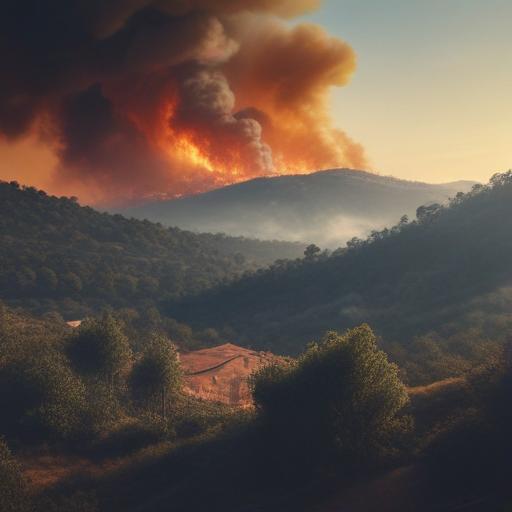Sardinia is grappling with a severe wildfire crisis as emergency crews respond to multiple blazes across the island. The Forestry and Environmental Protection Corps is currently battling eleven separate wildfires, with the most intense activity concentrated in Zerfaliu, Escolca, and Giave. These fires not only threaten local ecosystems but also place substantial pressure on communities and infrastructure.
In Zerfaliu, firefighters faced a relentless spread of flames originally igniting in agricultural land and quickly advancing toward nearby eucalyptus windbreaks. Coordinated efforts involving both air and ground support were vital, especially from a Superpuma helicopter, which played a crucial role in mitigating damage. Despite their endeavors, firefighters on the ground contended with treacherous conditions, including smoke and shifting winds.
Conversely, the Escolca fire erupted in the “M.za Rialli” area and escalated rapidly, necessitating extensive mobilization of firefighting resources. Helicopters from various bases, including Canadair and army support, were deployed to combat the flames threatening populated areas. The urgency of the response highlighted the collaboration among various firefighting units, as they worked long hours to contain the blaze.
Elsewhere, the Giave fire posed an imminent threat to rural farmlands and disrupted traffic after encroaching on vital roadways. Firefighters struggled to control the flames, which spread swiftly through drought-stricken terrain. Long traffic jams ensued as the 131 road temporarily closed, complicating evacuation and emergency response efforts.
As conditions remain precarious, the Civil Protection authorities issued heightened danger warnings to residents, urging them to stay vigilant and prepared for potential evacuations. These wildfires underscore escalating concerns about the impact of climate change, as increased temperatures and dry conditions contribute to the severity of wildfire seasons.
The region’s infrastructure is under significant strain amidst this crisis, illuminating the need for improved disaster management strategies. Experts suggest that the frequency and intensity of wildfires are likely to rise in the future, prompting discussions among officials and environmentalists about rebuilding and fortifying Sardinia against future threats.
While the immediate focus remains on extinguishing the fires, the long-term implications for Sardinia’s environment and economy could be far-reaching. The lessons learned from this crisis may reshape fire management in Italy and beyond, emphasizing the importance of preparation in an era marked by climate variability. Despite the challenges, the community’s collaborative spirit could foster resilience and innovation in the face of this evolving threat.
